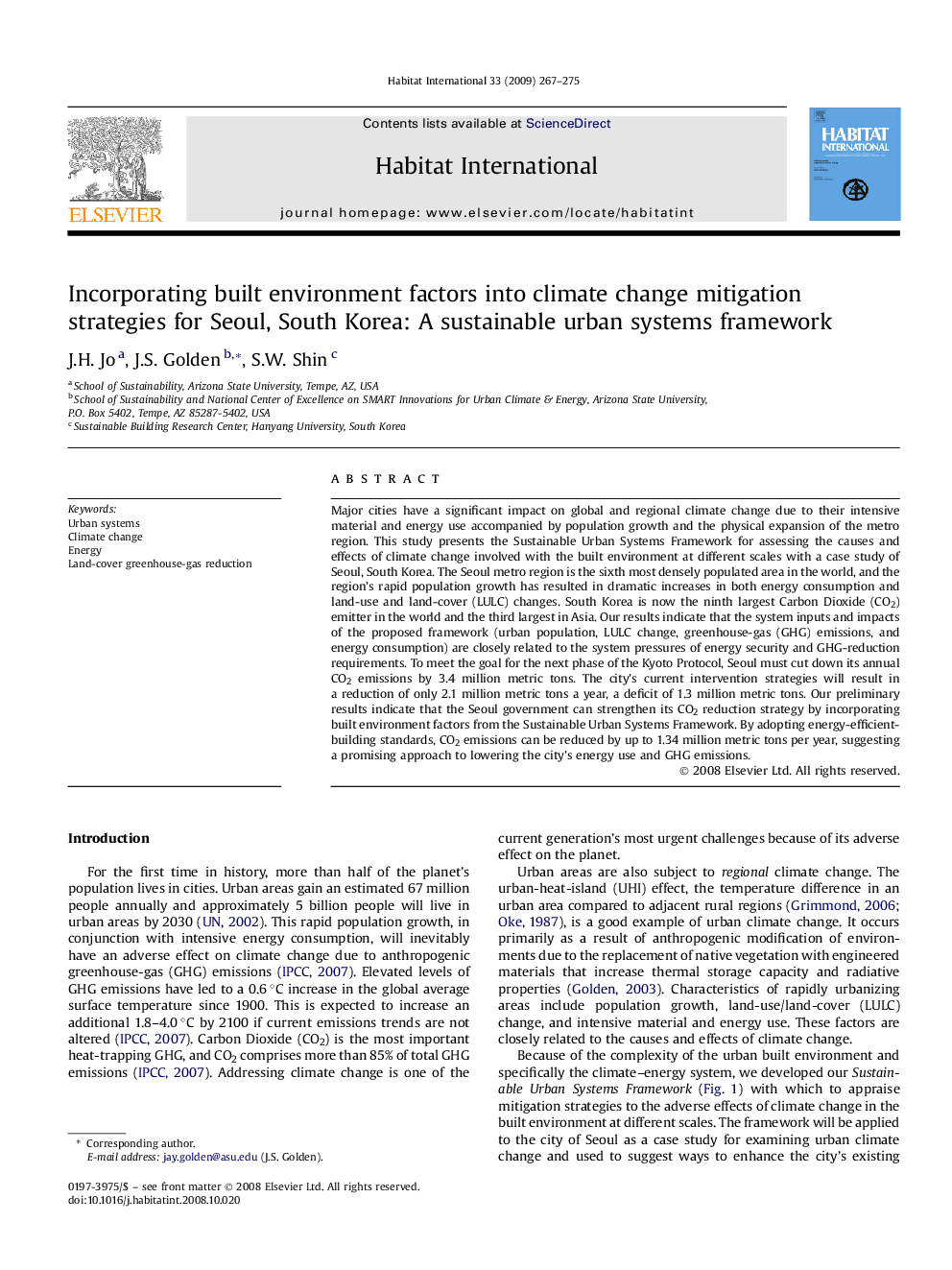| کد مقاله | کد نشریه | سال انتشار | مقاله انگلیسی | نسخه تمام متن |
|---|---|---|---|---|
| 1048209 | 945331 | 2009 | 9 صفحه PDF | دانلود رایگان |

Major cities have a significant impact on global and regional climate change due to their intensive material and energy use accompanied by population growth and the physical expansion of the metro region. This study presents the Sustainable Urban Systems Framework for assessing the causes and effects of climate change involved with the built environment at different scales with a case study of Seoul, South Korea. The Seoul metro region is the sixth most densely populated area in the world, and the region's rapid population growth has resulted in dramatic increases in both energy consumption and land-use and land-cover (LULC) changes. South Korea is now the ninth largest Carbon Dioxide (CO2) emitter in the world and the third largest in Asia. Our results indicate that the system inputs and impacts of the proposed framework (urban population, LULC change, greenhouse-gas (GHG) emissions, and energy consumption) are closely related to the system pressures of energy security and GHG-reduction requirements. To meet the goal for the next phase of the Kyoto Protocol, Seoul must cut down its annual CO2 emissions by 3.4 million metric tons. The city's current intervention strategies will result in a reduction of only 2.1 million metric tons a year, a deficit of 1.3 million metric tons. Our preliminary results indicate that the Seoul government can strengthen its CO2 reduction strategy by incorporating built environment factors from the Sustainable Urban Systems Framework. By adopting energy-efficient-building standards, CO2 emissions can be reduced by up to 1.34 million metric tons per year, suggesting a promising approach to lowering the city's energy use and GHG emissions.
Journal: Habitat International - Volume 33, Issue 3, July 2009, Pages 267–275